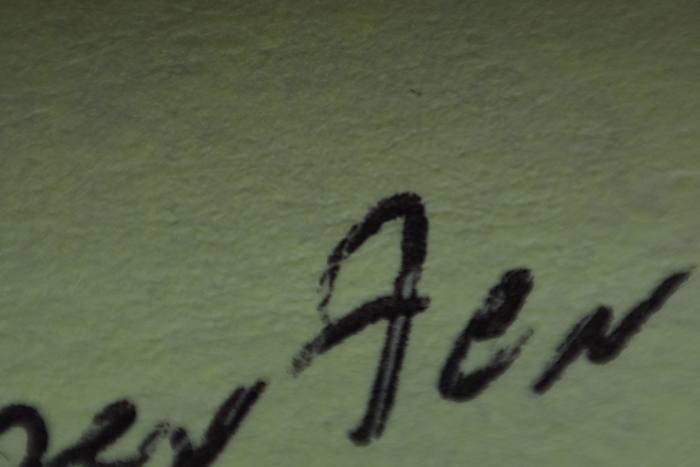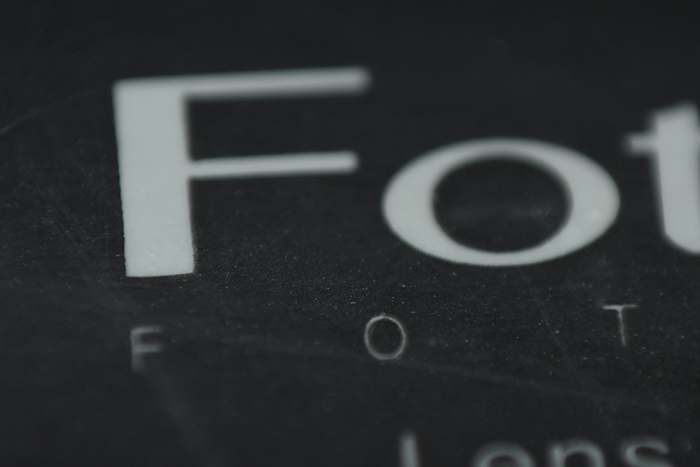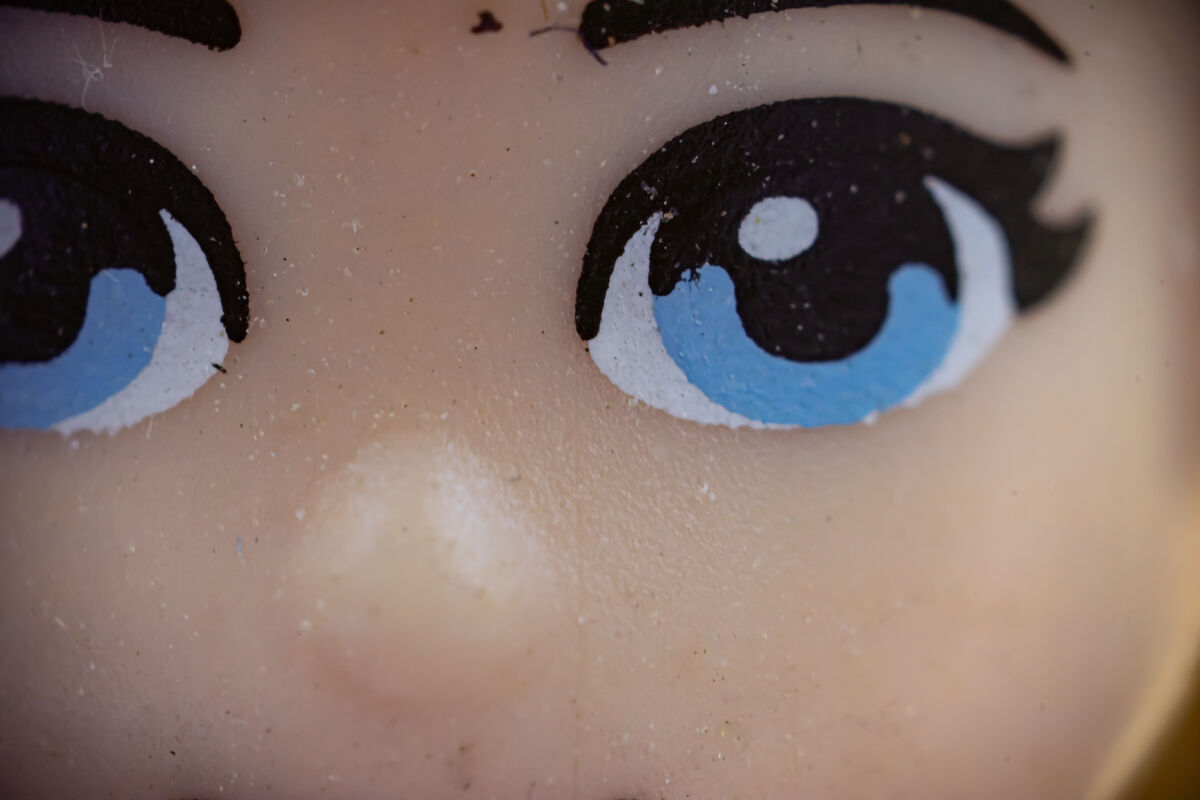Using a reverse adapter for macro.
Dec 20, 2022 17:12:46 #
augieg27
Loc: Central California
I recently wanted to try macro with my Nikon 35mm 1.8 and a reverse adapter.
Well, I was able to take some pictures, however, they were not recorded into the memory card nor were they shown on the camera screen.
I changed memory cards and tried with a Nikon 5500 and D90 with no success.
Has anyone experienced this issue? And if so, what's the solution?
Please advise,
Augie
Well, I was able to take some pictures, however, they were not recorded into the memory card nor were they shown on the camera screen.
I changed memory cards and tried with a Nikon 5500 and D90 with no success.
Has anyone experienced this issue? And if so, what's the solution?
Please advise,
Augie
Dec 20, 2022 18:41:22 #
Orphoto
Loc: Oregon
Augie, usually using a reverse adapter gets you a terribly narrow depth of field combined with awkward working distances. However it typically has nothing to do with memory card operation.
It may be that you did not in fact "take" a picture.
Reversing a lens will usually interrupt any autofocus capability. It is possible that you had your camera set on AF-S mode with a custom setting that would not allow you to "take" the picture unless the camera deems it to be in focus. Work around is in custom menu functions, change af-s to release instead of in focus. Same result if using af-c and yet set for locked unless in focus.
It may be that you did not in fact "take" a picture.
Reversing a lens will usually interrupt any autofocus capability. It is possible that you had your camera set on AF-S mode with a custom setting that would not allow you to "take" the picture unless the camera deems it to be in focus. Work around is in custom menu functions, change af-s to release instead of in focus. Same result if using af-c and yet set for locked unless in focus.
Dec 20, 2022 19:31:15 #
augieg27
Loc: Central California
Orphoto wrote:
Augie, usually using a reverse adapter gets you a ... (show quote)
Thank you Orphoto,
I will try your suggestions
Dec 20, 2022 21:01:23 #
Once you reversed the lens did you use something to hold the aperture open?
Since you said you took pictures, you may have taken very under exposed pictures.
You also lose all electrical connections.
---
Since you said you took pictures, you may have taken very under exposed pictures.
You also lose all electrical connections.
---
Dec 20, 2022 21:44:02 #
Guessing! That revers technique was more practical with mostly mechanical film cameras. Many lenses for modern digital bodies have many electronic contacts that have to do with the body's exposure control system. The reverse adapter will prove a mechanical fit but no electronic interface.
Dec 20, 2022 21:53:12 #
augieg27 wrote:
I recently wanted to try macro with my Nikon 35mm 1.8 and a reverse adapter.
Well, I was able to take some pictures, however, they were not recorded into the memory card nor were they shown on the camera screen.
I changed memory cards and tried with a Nikon 5500 and D90 with no success.
Has anyone experienced this issue? And if so, what's the solution?
Please advise,
Augie
Well, I was able to take some pictures, however, they were not recorded into the memory card nor were they shown on the camera screen.
I changed memory cards and tried with a Nikon 5500 and D90 with no success.
Has anyone experienced this issue? And if so, what's the solution?
Please advise,
Augie
To be successful with reversed lens photography, it is best to have a fully manual lens that gives you an aperture ring as well as the focus ring. There are adapters made that can attach to the camera and to the back of the lens with a cable that gives you control of the lens. But this is not necessary if you just use a manual lens.
There are two methods of doing reversed lens photography. One method is to use an adapter that plugs into the camera and the other end has threads to mount the lens. And this lens should be fully manual. You do need to control the aperture ring since many lenses (I don't know about your Nikon lens) stop the lens all the way down when not connected to the camera. The focus ring is less important as the primary mode of focus is to just must the camera closer or farther away to find the focus point.
This image was my practice shot to see how well it would work. I normally use a macro lens, but I had to see for myself how it might work, so I mounted an older Minolta Rokkor 58mm lens backwards onto a Sony A6500 1.5x crop sensor camera. And I did hand hold for this test image. I didn't make note of the aperture setting. It was a sunny day, and the shutter speed was 1/200 sec at ISO 100.
Another method is to have a lens mounted on the camera in the normal direction and to reverse mount another lens on the front of that attached lens.
Refer to the 2nd image for an example. Used a 200mm Asahi Pentax Takumar as the non-reversed lens attached to the camera and revered a manual 50mm lens on the end of the 200mm lens. We are looking at the face of a lego character that is about 5 cm tall and that portion of the face is about 5mm. There is more magnification in this approach.
Both methods are discussed in this site for online instruction on reverse lens shooting:
https://digital-photography-school.com/reverse-lens-macro-close-up-photography-lesson-3/
Have fun!
Dec 20, 2022 22:07:32 #
JimH123 wrote:
To be successful with reversed lens photography, i... (show quote)
The Photodiox brand adapter I bought has 2 parts. One piece screws into the front of the lens and mounts to the camera body. The other piece mounts on the back (now the front) of a Nikkor AF-s lens with a provision for adjusting the aperture and screwing on a filter if desired.
As Mr. Shapiro mentioned, there are no electrical contacts.
---
Dec 20, 2022 22:10:15 #
I think you need to visit the menus and enable "shoot without lens". Without any electronic connections the camera sees "no lens attached".
Acoarst reversing an electronic lens with a simple piece of machined aluminum is kinda pointless anywho unless its an old AF lens that has an aperture control ring.
There is a workaround for controlling the aperture when theres no control ring but it will cost you over an inch of working clearance and about $50.
Acoarst reversing an electronic lens with a simple piece of machined aluminum is kinda pointless anywho unless its an old AF lens that has an aperture control ring.
There is a workaround for controlling the aperture when theres no control ring but it will cost you over an inch of working clearance and about $50.
Dec 20, 2022 22:49:29 #
User ID wrote:
I think you need to visit the menus and enable "shoot without lens". Without any electronic connections the camera sees "no lens attached".
Acoarst reversing an electronic lens with a simple piece of machined aluminum is kinda pointless anywho unless its an old AF lens that has an aperture control ring.
There is a workaround for controlling the aperture when theres no control ring but it will cost you over an inch of working clearance and about $50.
Acoarst reversing an electronic lens with a simple piece of machined aluminum is kinda pointless anywho unless its an old AF lens that has an aperture control ring.
There is a workaround for controlling the aperture when theres no control ring but it will cost you over an inch of working clearance and about $50.
I just put a D7200 in manual mode with a 40mm DX lens and it worked. The aperture control ring measures 3/4in. The reversing ring is $12.95 and the aperture control ring is $24.95 at B&H.
These are about 1/2 inch wide, hand held about 3 minutes ago.
The first is a Post-it note, the second is from the box the adapter came in.
I have used this setup a few times with proper lighting, a tripod, and a Neewer focusing rail ($39.99)
It can be fun on a rainy day. On a sunny day a macro lens is more practical.



---


Dec 20, 2022 23:45:31 #
augieg27
Loc: Central California
Thank you all for your suggestions.
Now I have to figure it out.
Augie
Now I have to figure it out.
Augie
Dec 20, 2022 23:50:50 #
Bill_de wrote:
I just put a D7200 in manual mode with a 40mm DX l... (show quote)
Uh huh. Pretty much what I was talking about. Didnt cost all of $50 so thaz good news. Also you found some device thaz physically smaller than the ones that Im aware of. Again good news.
I was using a Sony to Nikon-G adapter to control the aperture. Apparently you have found a similar device but shallower than my lens adapter.
Dec 21, 2022 00:08:22 #
User ID wrote:
Uh huh. Pretty much what I was talking about. Didnt cost all of $50 so thaz good news. Also you found some device thaz physically smaller than the ones that Im aware of. Again good news.
I was using a Sony to Nikon-G adapter to control the aperture. Apparently you have found a similar device but shallower than my lens adapter.
I was using a Sony to Nikon-G adapter to control the aperture. Apparently you have found a similar device but shallower than my lens adapter.
I was trying to remember why I bought this. I have a feeling it was one of B&H's deals of the day.

---
Dec 21, 2022 00:15:29 #
Bill_de wrote:
I was trying to remember why I bought this. I have a feeling it was one of B&H's deals of the day. 
---

---
That sounds sooooooper likely .....
If I put my adapter on a lathe and cut away the section thaz just empty tube, keeping only the part with the aperture control ring, the remainder is the device that you bought.
And there I was crediting you with hunting down this great device and now you go and admit you just impulsively clicked on a deal-of-the-day.
Dec 21, 2022 06:48:22 #
I reverse my manual focus Nikon AI lenses with an ancient 52mm reversing ring, set the aperture on the lens to f5.6 or 8, set the D750 on "Manual", and experiment with the shutter speed/ISO to get the right exposure. Focusing is usually done by getting closer to or farther from the subject until I see good focus.
Dec 21, 2022 08:18:18 #
Did it for a couple of years , with descent result .You have to use a Old lens from the film era that has a manual f stop . So due to the very narrow depth of field , you will be shooting at f16 or 22 .So you have the lens [ i used a 50mm pentax 1.7 ] now set at f 16 or 22 , you will need a lot of light , the focusing ring does nothing , so dont use it .You will focus by getting closer or farther to the subject . The disadvantage of this way of doing , since the lens is closed to f16 or 22 , it will be dark in the view finder .I use a clamp on ring light [ not a flash ] this help lighting the scene . This is fun to do , the pics will be sharp and somewhat flat field .The other way is to use extension tubes with a modern lens . Forget auto focus on macro .
If you want to reply, then register here. Registration is free and your account is created instantly, so you can post right away.




